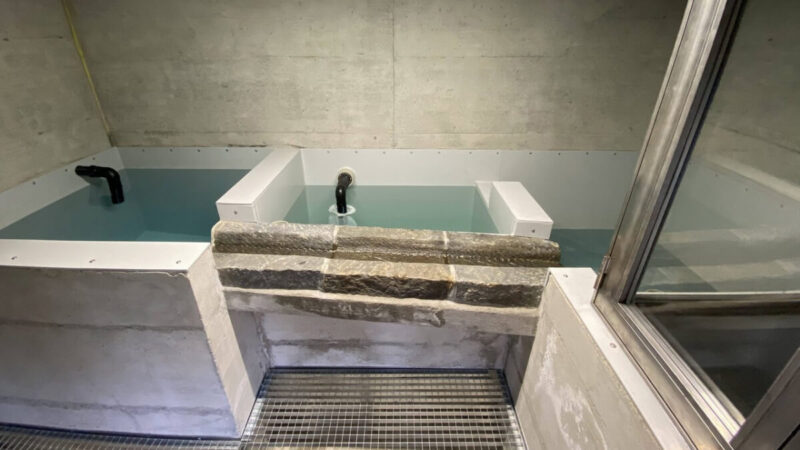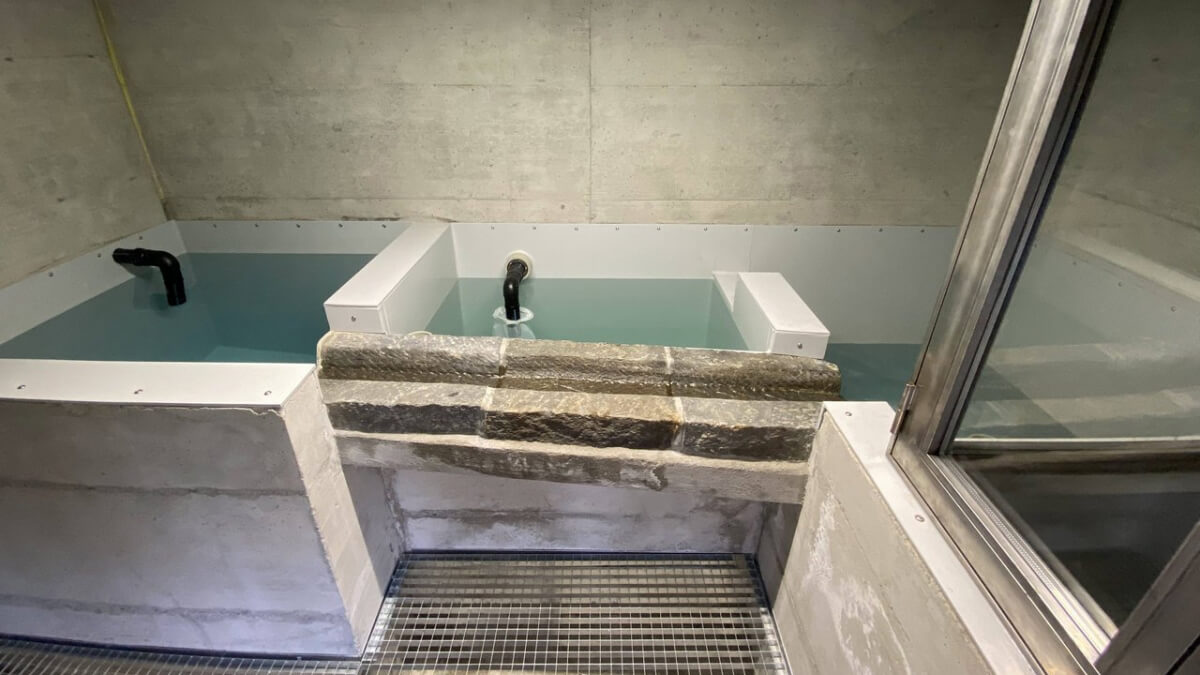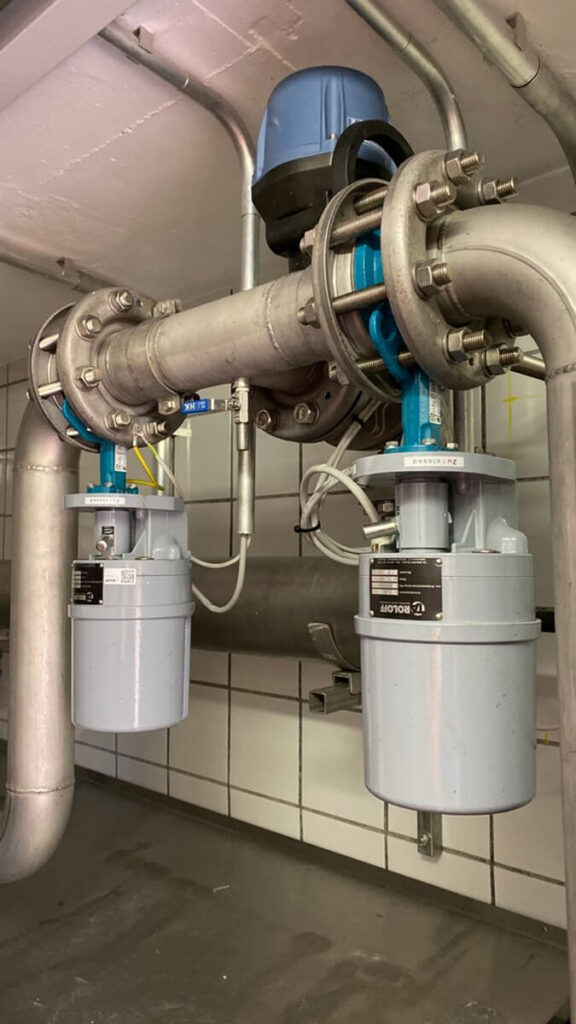Have you ever wondered, when you open the tap, where it comes from and how the water that arrives in your homes is treated? The water you use to drink, to cook, to wash, to irrigate the garden ... The so-called ‘blue gold’, a term that indicates how precious and fundamental this resource is for all of us. Well, in this article we try to explain in a simple and concise way how the Brissago Water Supply Service works.
Let's start with the figures who manage it: Giacomo Fiscalini, who directs it, deals with investment planning; Martin Treichler is responsible for water quality and the work programme; Fabio Pantellini of invoicing. Finally, two overseers of the aqueduct Baldo Gigliotta and Renato Cagna work at the Service. Few people, in short, to manage a very delicate and complex system that belongs to the municipal Claudio Jelmoni.
The first thing to know, Fiscalini explains, is that Brissago’s water is practically all spring water. About 70% It comes from the drainage of the tunnel connecting Lake Palagnedra to the OFIMA power station, with which the municipality has a concession. The remaining 30% Instead, it comes from mountain springs, distributed mainly in the coasts of Incella and Piodina: “This is obviously non-surface water, which flows from the depths of the rock, and is therefore particularly clean, filtered naturally. As a precaution, we still carry out treatments with UV lamps that eliminate any residual bacteria: the largest is located near the OFIMA tunnel, the others are installed near the sources.’ However, lake water will (also) have to be used in the future. “In the coming years (2035) the concession with the Maggia hydroelectric plants will expire – says the head of the Jelmoni ministry – and if it is not possible to renew this concession, the main source of supply will be lacking. We have therefore already launched a preliminary study, in collaboration with the municipalities of Ronco and Ascona, to assess the feasibility of collecting water in the depths of the lake. It is a project that, if plausible, could materialise within 15 years and will require significant investment, including in water treatment and purification. In any case, we intend to maintain the current sources. I will say more: we intend to further improve the collection, proof of this is that we are looking for a new mountain spring for the Naccio area, where water is scarce. In the coming months, we will understand whether this is a sustainable investment and whether we will be able to identify a source that ensures a steady flow.” Once the water has been collected, it is placed in storage tanks, some 20 of which are scattered throughout the municipality. Their role is to distribute the water in the different ‘pressure zones’ and to regulate the pressure evenly over the entire network. Brissago has a particular morphology, with settlements ranging from the lake to the mountain, and it would not be possible to manage the distribution with a single tank. The system also includes water reserves in case of drought and fire-fighting and, simplifying as much as possible, is based on three pillars: collection, accumulation and storage, distribution.
As far as investments are concerned, as Jelmoni already mentioned, they are not of little importance, on the contrary: “In recent years – explains Fiscalini – we have replaced the aqueduct under the cantonal road, which cost around EUR 4 million. We are currently remaking the network between Porta and Gadero. We have also built new tanks and purchased equipment to search for leaks in the network. Clearly, as Brissago is a municipality with a high proportion of secondary residences – it has about 1,600 residents and a potential of 5,000 inhabitants during the summer – water consumption increases greatly between July and August. The network has therefore been sized to serve all dwellings, although for most of the year it is used only by primary dwellings.
Our network, adds Jelmoni, “is sized on the basis of the cantonal water supply plan, which establishes the needs according to the municipal regulatory plans, establishing the potential of the domestic economies to be served. It is obvious that having a large number of holiday homes requires more investment and higher operating costs, but the same goes for other municipal services, such as waste collection.
Despite the drought that characterised the summer of 2022, Brissago had no particular supply problems. “Of course – says Fiscalini – in some periods of last year the situation was critical, especially in the mountains, but we were still able to ensure distribution, albeit with some limitations on use”.
In this regard, adds Jelmoni, "we will soon adopt a general plan in case of drought that aligns the levels of alert at cantonal level, establishing the measures that municipalities must take, and enforce the population, in case of water scarcity. We will discuss this in the City Hall in the coming weeks.
But for municipalities that, like Brissago, rely on spring water, heavy rains can also be a problem: “In these cases – explains Fiscalini – there is always a risk of infiltration into the surface water network. To avoid any contamination, malfunctions and failures, which would lead to warnings of non-potability of the water, we undergo a constant quality control on the entire aqueduct, with regular microbiological analyses at the critical points of the network, to which are added the unannounced checks by the official control body (Cantonal Laboratory). Not only: each spring has several protection areas, some fenced, which prevent access to wild or farmed animals.
In short, the water that comes into our homes is really ‘blue gold’, as Martin Treichler says, we can drink it with absolute peace of mind. This is also confirmed by the results of the annual competition organised by the Associazione Cantonale dei Fontanieri, which show that Brissago’s water is of excellent quality: not only clear and clean, but also rich in precious mineral substances. Furthermore, concludes Treichler, we are implementing a complex system for integral quality management that includes not only the water itself but all areas of the aqueduct and the people who work there. So, Cin-Cin...
For more information on water quality: https://trinkwasser.ch/it/fornitore/1175/servizio-di-approvvigionamento-acqua-potabile


